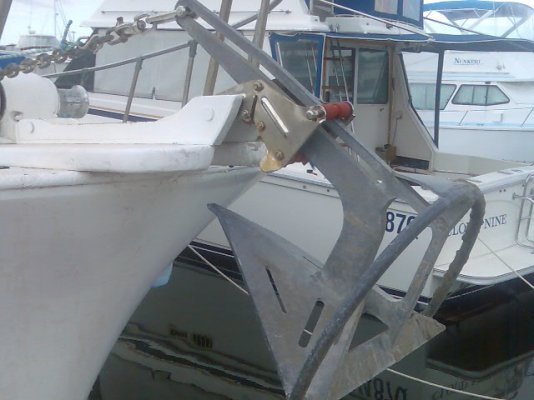Brisyboy
Senior Member
- Joined
- Mar 7, 2015
- Messages
- 423
- Location
- Australia
- Vessel Name
- Malagari
- Vessel Make
- Island Gypsy 36 Europa
I was bringing the anchor in last time we were out - not thinking of anything in particular until the anchor chain brought the tip of the anchor shank to the bow roller. At this point the chain is pulling at right angles to the shank and has to pull the anchor (25kg) through 90 degrees (from vertical to horizontal) to get it on board. The winch manages it but it dawned on me what a horrendous strain it must put on the motor and gearbox. Initially the leverage the winch has to work with is virtually nil but it is expected to lift it.
The only thing I could think of was a second roller, forward and down from the existing bow roller which might reduce the angle of direction change from 90degrees to perhaps 45degrees
Am I overthinking this or should I just leave the winch to get on with winching?
The only thing I could think of was a second roller, forward and down from the existing bow roller which might reduce the angle of direction change from 90degrees to perhaps 45degrees
Am I overthinking this or should I just leave the winch to get on with winching?






